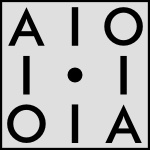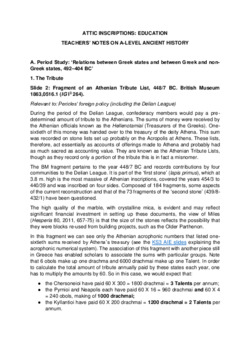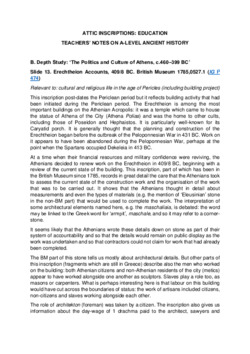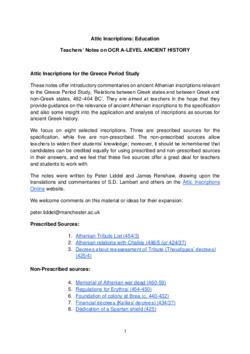A-Level Ancient History
A-level Ancient History Resources
OCR H407, first assessment in 2019
In the Aims and Learning Outcomes section of OCR’s specifications for A-level Ancient History it is stated that the qualification will enable learners to “understand the nature of historical evidence from the ancient world and its scarcity to build an understanding of historical periods studied and the methods used in the analysis and evaluation of evidence.” The Knowledge, Understanding and Skills sections of the Period Study and Depth Study components outline how successful completion requires the “critical use of ancient source material” and says that “Different types of evidence need to be analysed and evaluated. Learners need to understand the usefulness and limitations of the ancient source evidence studied and how this affects the conclusions that can be drawn.” These notes aim to contribute to students’ depth of engagement with ancient evidence, debates about them and modern scholars’ interpretations of them.
The current specifications for Ancient History A-level specify two inscriptions, the Chalkis Decree (= LACTOR 1 The Athenian Empire no. 78) and Thoudippos decree (= LACTOR 1 The Athenian Empire no. 138). Both decrees are now translated with annotations on the AIO website:
Neither are discussed in this series of notes which concentrate on the ancient Athenian inscriptions in UK collections; however, they are discussed in detail in Lambert’s Attic Inscriptions Online Papers volume 8, which contains also a general introduction to inscribed Athenian decrees of the 5th century BC, suitable for A-level students.
Ancient Athenian Inscriptions are specifically relevant to two component options on Greek history in the fifth century BC:
● Period Study: ‘Relations between Greek states and between Greek and non-Greek states, 492–404 BC’;
● Depth Study: ‘The Politics and Culture of Athens, c.460–399 BC’.
We have divided these notes between these areas; the two documents make reference to a single set of images which is divided into two parts.
We have created a document offering teachers' notes on 8 Attic inscriptions particularly relevant to the Period Study. This can be accessed here.
For a survey of ancient Athenian inscriptions relevant to the themes of fifth-century Greek history (the Athenian empire, democracy, the Peloponnesian War), see Lambert's Attic Inscriptions Online Papers volume 10. For a succinct review of debates about the Athenian empire, seen from an epigraphical perspective, we recommend Polly Low’s forthcoming AIO Youtube channel video on the subject. Learners should be encouraged to acknowledge the time period from which evidence derives and what it can tell us in relation to the questions posed. For Ancient History there is a requirement to analyse what we can actually learn from the sources so teachers and students should carefully consider the selection and use of AIO material. Learners should be assured that relevant use of additional non-prescribed sources will be credited by examiners; however, going beyond the set sources is not a requirement to get full marks in a particular question.A-level Ancient History Slides
A-level Ancient History Slides - Peter Liddel
Slides on Athenian inscriptions supporting the teaching of A-level Ancient History.
View paperA-level Ancient History Teachers' Notes 1 Period Study
A-level Ancient History Teachers' Notes 1: Period Study - Peter Liddel
Teachers' Notes on Athenian inscriptions aimed at supporting the Period Study on Relations between Greek states and between Greek and non-Greek states, 492–404 BC.
View paperA-level Ancient History Teachers' Notes 2 Depth Study
A-level Ancient History Teachers' Notes 2 Depth Study - Peter Liddel
Teachers' Notes on Athenian inscriptions aimed at supporting the Depth Study on The Politics and Culture of Athens, c.460–399 BC.
View paper



